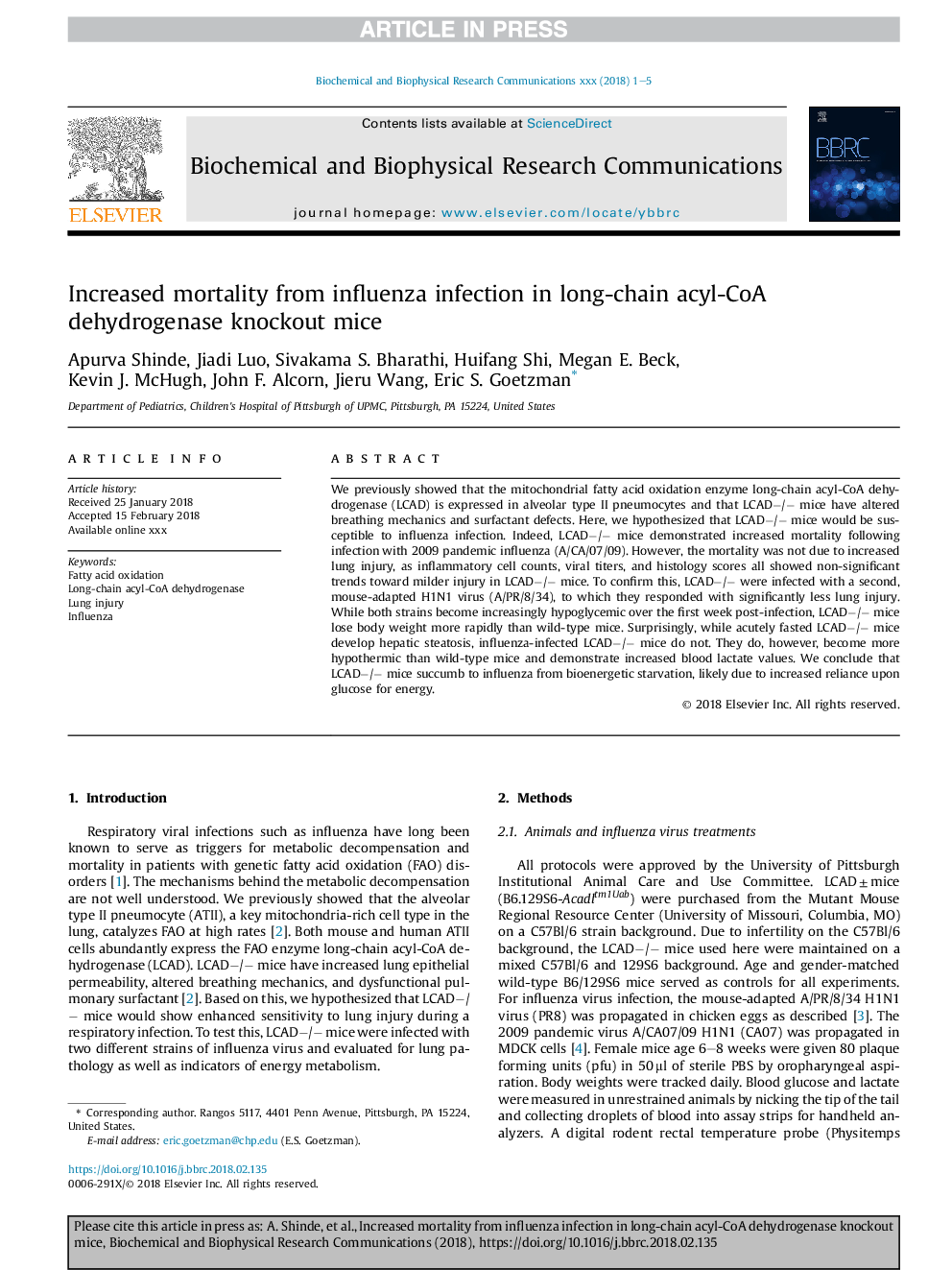| Article ID | Journal | Published Year | Pages | File Type |
|---|---|---|---|---|
| 8294065 | Biochemical and Biophysical Research Communications | 2018 | 5 Pages |
Abstract
We previously showed that the mitochondrial fatty acid oxidation enzyme long-chain acyl-CoA dehydrogenase (LCAD) is expressed in alveolar type II pneumocytes and that LCADâ/â mice have altered breathing mechanics and surfactant defects. Here, we hypothesized that LCADâ/â mice would be susceptible to influenza infection. Indeed, LCADâ/â mice demonstrated increased mortality following infection with 2009 pandemic influenza (A/CA/07/09). However, the mortality was not due to increased lung injury, as inflammatory cell counts, viral titers, and histology scores all showed non-significant trends toward milder injury in LCADâ/â mice. To confirm this, LCADâ/â were infected with a second, mouse-adapted H1N1 virus (A/PR/8/34), to which they responded with significantly less lung injury. While both strains become increasingly hypoglycemic over the first week post-infection, LCADâ/â mice lose body weight more rapidly than wild-type mice. Surprisingly, while acutely fasted LCADâ/â mice develop hepatic steatosis, influenza-infected LCADâ/â mice do not. They do, however, become more hypothermic than wild-type mice and demonstrate increased blood lactate values. We conclude that LCADâ/â mice succumb to influenza from bioenergetic starvation, likely due to increased reliance upon glucose for energy.
Related Topics
Life Sciences
Biochemistry, Genetics and Molecular Biology
Biochemistry
Authors
Apurva Shinde, Jiadi Luo, Sivakama S. Bharathi, Huifang Shi, Megan E. Beck, Kevin J. McHugh, John F. Alcorn, Jieru Wang, Eric S. Goetzman,
